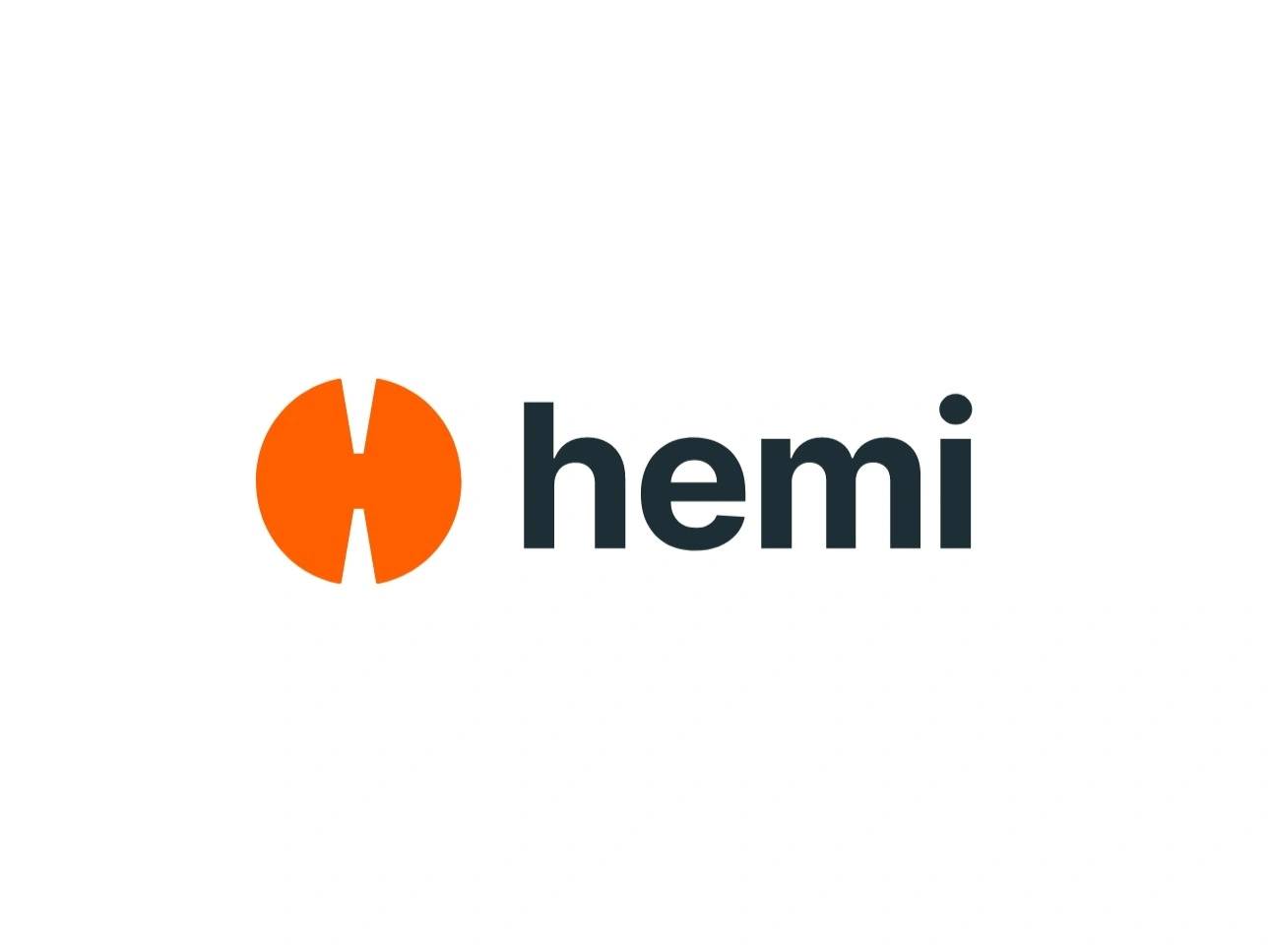订阅 wiki
Share wiki
Bookmark
Hemi
Hemi
Hemi 是一个模块化的 Layer 2 区块链,旨在整合 比特币 和 以太坊 生态系统。该协议旨在通过引入可编程性来增强 比特币 的实用性,允许开发者构建直接与 比特币 数据交互的 去中心化应用程序 (DApps),同时利用与以太坊兼容的环境。
概述
Hemi的开发是为了解决比特币网络的可编程性限制。虽然比特币因其安全性和作为价值储存手段的地位而受到认可,但其脚本语言有意受到限制,这限制了直接在其基础层上开发复杂的智能合约和DApp。Hemi试图通过创建一个“可编程的比特币链”来弥合这一差距,该链结合了比特币的安全性与以太坊虚拟机(EVM)的智能合约灵活性。该项目的核心愿景是将比特币和以太坊视为统一的“超级网络”的组成部分,从而在比特币去中心化金融(BTCFi)、Web3和人工智能领域实现新的应用。 [5] [8]
该协议作为一个可编程性层,允许闲置的比特币被用作DeFi应用中产生收益的生产性资产,如借贷和质押,而无需用户依赖比特币的包装或合成版本。这种方法旨在通过提供一个安全的环境来利用其资产,从而吸引机构资本和大型比特币持有者。该项目在公开发布之前已经开发了两年。该网络由Hemi Labs开发,并由Hemispheres Foundation支持。 [2] [3]
在发布之后,Hemi生态系统出现了显著增长。截至2025年9月底,不同报告平台上的网络总锁定价值(TVL)数据各不相同。一些来源表明DeFi TVL约为2.79亿美元,这使得Hemi成为按此指标计算的第二大比特币侧链。其他报告表明,其所有协议的TVL已超过8.4亿美元,一些估计值将总TVL定为高达12亿美元。到那时,该生态系统已扩展到包括90多个活跃协议和超过10万名经过验证的用户,表明采用率和实用性不断提高。 [9] [10]
历史
Hemi 由比特币早期核心开发者 Jeff Garzik 和区块链安全专家 Max Sanchez 共同创立。该项目旨在融合两个最大的区块链生态系统的优势。在推出之前,Hemi Labs 在由币安实验室和 Breyer Capital 共同领投的融资中获得了 1500 万美元。[7] [8]
Jeff Garzik 一直是开源软件和区块链行业的杰出人物。在参与比特币之前,他曾在 Red Hat 工作十年,为 Linux 内核做出了贡献。他是比特币核心软件的早期开发者之一,并通过分配 15,678 BTC 的赏金,在早期开发者社区的培养中发挥了作用。[5]
Max Sanchez 被认为是 Proof-of-Proof 共识机制的共同发明人,该机制是 Hemi 架构的核心。他的背景包括共同创立 VeriBlock 并担任首席技术官,以及在 Coinbase 担任工程师。自 2011 年以来,他一直活跃于区块链领域,并因识别和帮助解决各种区块链项目中的共识漏洞以及开发开源 GPU 矿工而受到认可。[5] [7]
原生代币 HEMI 于 2025 年 8 月底公开发布。2025 年 9 月 23 日,币安宣布 Hemi 将成为其 HODLer 空投计划中的第 43 个项目,为该活动分配了 1 亿个 HEMI 代币。该代币随后在同一天在交易所上市,并带有“种子标签”,表明它是一个早期项目。HEMI 兑 USDT、USDC、BNB、FDUSD 和 TRY 的交易对已开通。[7] [10] [11]
市场表现
初始价格飙升
在2025年8月底相对平静的公开发行之后,HEMI代币在2025年9月经历了显著的价格上涨。不到一个月的时间里,该代币的价值从8月底的低点上涨了超过900%。此次上涨是由战略性交易所上市、对其DeFi生态系统日益增长的兴趣以及投机性需求共同推动的。2025年9月23日,在Binance上市公告发布当天,该代币的价格达到了0.1773美元的日内高点。在其峰值时,该项目的完全稀释估值(FDV)约为17亿美元。 [9] [10]
交易所上市和影响
该代币的迅速崛起很大程度上得益于其在币安(全球最大的加密货币交易所)上市,这为数百万用户提供了访问权限,并大大提高了其流动性。此次上市是币安的HODLer空投计划的一部分,该计划向质押 BNB的用户分发了1亿个HEMI代币,进一步刺激了需求。然而,这次上涨并非完全依赖于币安上市。HEMI代币此前已在其他交易所首次亮相,包括Gate、Toobit、BYDFi和WEEX,这有助于在多个市场建立流动性和可访问性。日益增长的兴趣最终导致24小时交易量超过5亿美元,是当时市值的3倍,突显了强劲的需求和活跃的交易者参与。 [9] [8]
衍生品市场和技术展望
除了现货市场上市外,HEMI 还被引入了衍生品市场。2025 年 9 月 24 日,该代币在 Hyperliquid 上以高达 3 倍的杠杆进行永续期货交易,进一步扩大了其在交易者中的影响力。尽管有强劲的上涨势头,但技术指标表明该代币正在进入超买区域。14 天相对强弱指数 (RSI) 达到 86.61,而 7 天 RSI 达到 90.49 的峰值。这些水平表明了极端的看涨势头,但也突出了短期价格回调的潜在风险,因为交易者可能会寻求获利了结。 [9]
技术
Hemi的架构建立在几个核心组件之上,旨在促进比特币和以太坊网络之间安全无缝的互操作性。
Hemi 虚拟机 (hVM)
Hemi 虚拟机 (hVM) 是网络功能的核心。它是 Ethereum 虚拟机 (EVM) 的修改版本,完全兼容 EVM,允许开发者使用熟悉的工具和编程语言,如 Solidity。hVM 的关键创新在于它将完整的 Bitcoin 节点 直接嵌入到其环境中。这种设计通常被描述为“包裹在 EVM 中的完整 Bitcoin 节点”。 [2] [5] [10]
这种集成使部署在 Hemi 上的智能合约能够原生且直接地读取 Bitcoin 网络数据,包括交易、账户余额和未花费交易输出 (UTXO),而无需依赖外部预言机或中心化数据提供商。为了方便这一点,hVM 使用自定义的预编译智能合约,这些合约充当高效的内置函数,用于查询 Bitcoin 的状态。为了确保 Hemi 网络上的所有节点都具有一致且最新的 Bitcoin 区块链 视图,一个名为 Tiny Bitcoin Daemon (TBC) 的轻量级进程在每个 Hemi 节点 上运行。TBC 连接到 Bitcoin 网络,下载区块,并在 across Hemi 生态系统中同步这些数据。 [7]
Proof-of-Proof (PoP) 共识
Hemi 利用一种专有的共识机制,称为 Proof-of-Proof (PoP) 来保护其网络。PoP 由 Max Sanchez 共同发明,旨在为 Hemi 提供 比特币-级别的安全性,并以去中心化和无需许可的方式最终确定,以防止链重组。该机制通过将 Hemi 的网络状态锚定到 比特币 区块链来实现。 [5]
PoP 系统涉及两种关键类型的参与者:
- Hemi 验证者: 这些是标准网络验证者,负责在 Hemi 链上生成和验证区块。
- PoP 矿工: 这些是专门的矿工,负责监控 Hemi 网络。他们收集 Hemi 的 区块 头,生成其有效性的加密证明,并将这些证明嵌入到 比特币 区块链上的交易中。
PoP 矿工因其工作而获得 HEMI 代币奖励。通过将这些证明发布到 比特币,他们创建了 Hemi 链状态的不可变且可公开验证的记录。在确认延迟 9 个 比特币 区块(大约 90 分钟)后,Hemi 区块被认为是最终的。此延迟是一种安全措施,旨在考虑 比特币 区块时间和交易费用的可变性,确保锚定状态是 比特币 链的 稳定 且不可逆转的部分。 [7]
隧道
隧道是Hemi的原生机制,用于在比特币、以太坊和Hemi网络之间进行跨链资产转移。该系统旨在消除对传统第三方桥梁的需求,这些桥梁可能会引入额外的安全风险和中心化向量。隧道通过直接跟踪连接的区块链的状态在协议级别运行,避免使用外部中继器。 [2]
通过隧道转移资产的过程包括三个主要步骤:
- 存款: 用户将其资产锁定在原始链(例如以太坊)上的智能合约中。
- 铸造: 在Hemi网络上创建等量的挂钩代币,允许用户与Hemi生态系统中的DApp交互。
- 提款: 要检索原始资产,用户发起提款,这会烧毁Hemi上的挂钩代币。在此交易完成后,原始资产将从源链上的智能合约中释放。
截至2025年9月,隧道支持基于ERC-20和BRC-20代币标准的资产转移,并计划扩展对其他Hemi原生和比特币原生资产的支持。 [7]
开发者工具
Hemi 提供了一套工具来促进比特币感知应用程序的开发。
- Hemi Bitcoin Kit (hBK): 这是一个智能合约库和软件开发工具包 (SDK),专为 Hemi 网络设计。 hBK 简化了开发人员从其智能合约访问和查询 比特币 数据的过程,利用了 hVM 的原生功能。 [2] [11]
- Chainbuilder: 这种基础设施解决方案允许开发人员启动他们自己的自定义的、特定于应用程序的网络。 这些网络通过 Hemi 的 PoP 共识和 Hemi 生态系统的可编程性,继承了 比特币 的安全性。 [2]
- 原生 BTC 重新质押: 此功能使用户能够直接质押原生 比特币。 构建在 Hemi 上的协议随后可以使用此重新质押的 BTC 来增强其自身的安全性,同时用户可以在其 比特币 持有量上获得收益,而无需将其转换为包装资产。 [2]
Tokenomics
Hemi协议的原生实用代币是HEMI。它被设计在网络的治理、安全和运营中发挥核心作用。
实用性
HEMI代币在生态系统中具有多种主要功能:
- 治理: HEMI持有者可以通过投票参与协议的治理,包括网络升级、参数变更和其他生态系统范围内的决策。
- Gas费用: 该代币用于支付Hemi网络上的交易费用。这包括部署智能合约、通过hVM与比特币状态交互以及通过隧道执行跨链传输的费用。
- 安全和质押: 用户可以质押HEMI,为网络安全做出贡献,并支持Proof-of-Proof共识机制。通过质押 HEMI,参与者可以获得veHEMI,从而获得网络奖励的一部分,包括区块奖励和一部分交易费用。
这些实用程序旨在创建一个循环经济,其中代币的需求与网络活动和安全性相关联。 [7]
供应与分配
HEMI代币的最大供应量为10,000,000,000(100亿)枚代币。截至2025年末推出时,该代币通过各种渠道引入市场,包括币安 HODLer 空投。对于此活动,100,000,000枚HEMI,相当于总供应量的1%,被分配给符合条件的币安用户。除了空投之外,另有100,000,000枚HEMI代币被预留用于营销活动和社区活动,将在公告发布后的六个月内使用。该代币作为ERC-20代币存在于以太坊网络上。 [5] [7] [11]
用例
Hemi 的技术旨在实现以前难以或不可能使用原生 Bitcoin 构建的各种应用。潜在的用例包括:
- 低费用比特币 DeFi: 构建借贷和自动做市商 (AMM) 平台,使用原生 Bitcoin 作为 抵押品。
- 非托管比特币服务: 创建用于自封装 BTC 或无需信任的托管系统等服务的应用程序。
- 跨链交易: 促进来自 Bitcoin、Ethereum 和 Hemi 生态系统的原生资产之间的去中心化交易。
- 多链 DAO: 建立去中心化自治组织,其治理模型可以纳入来自 Bitcoin 和 Ethereum 社区的代币持有者。
- 比特币支持的金融: 开发由原生 BTC 支持和结算的金融产品和结算系统。
- 比特币保护的人工智能: 使用 Hemi 网络发布和验证 AI 模型哈希,使用 Bitcoin 区块链 的不变性来保护它们。
这些用例 利用 Hemi 读取比特币状态并在 EVM 环境中执行复杂逻辑的能力。 [2]
生态系统与合作伙伴关系
Hemi 已经建立了一个由投资者、基础设施提供商和 DeFi 协议组成的网络,以支持其增长。该项目获得了来自 Breyer Capital、Big Brain Holdings、Crypto.com、Gate Ventures、BTC Inc、HiperChain 和 Republic 等投资者的 1500 万美元融资。该轮融资由 Binance Labs 共同领投,Binance Labs 也通过其上市和 airdrop 计划为该项目提供了支持。 [2] [5] [8]
在其技术基础设施方面,Hemi 与 Infura 的 MetaMask 开发平台集成,其去中心化基础设施支持由 DINBuild 提供。该项目在启动时宣布了几个关键合作伙伴关系,以引导流动性和用户活动。其桥接基础设施由 StargateFinance 提供支持,桥接的用户界面由 Oku 等平台提供。为了激励参与其 DeFi 生态系统,Hemi 实施了一个由 Merkl 管理的奖励计划。集成的 DeFi 协议包括 SushiSwap V3、izumi Finance、Spectra 和 Gearbox Protocol。其 DeFi 生态系统的快速扩张导致到 2025 年 9 月底,已有超过 90 个活跃协议加入。 [3] [9]
发现错误了吗?
